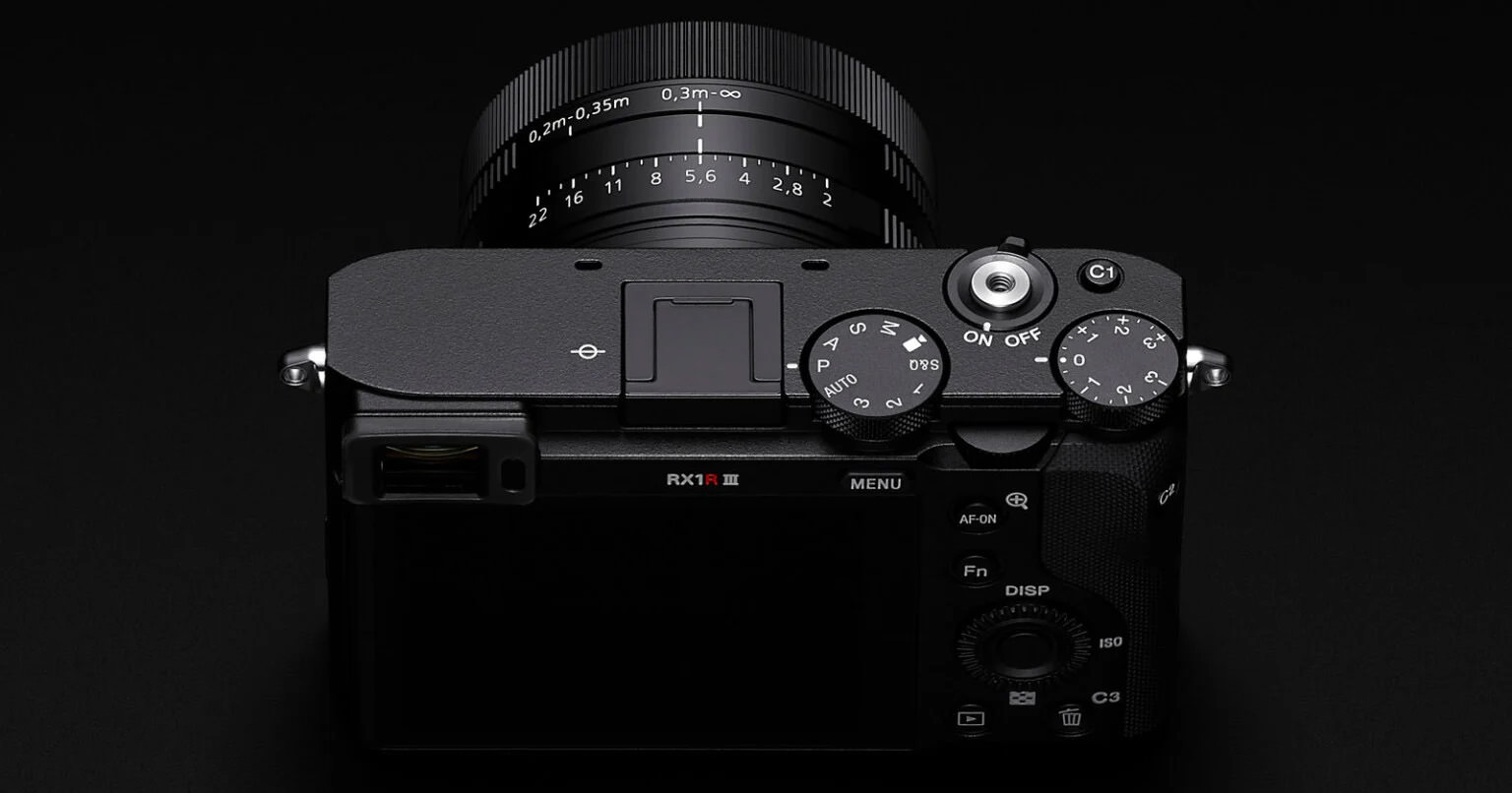Sony Unveils RX1R III Compact Full-Frame Camera
Sony has officially introduced the RX1R III, a premium compact camera that arrives nearly a decade after its predecessor, the RX1R II. The new model represents a significant update in terms of internal hardware, but also retains some elements that have remained unchanged since the original RX1 launched in 2012.
Physically, The RX1R III introduces a redesigned body built from magnesium alloy and measures 113 x 68 x 88 mm, with a weight of 498g including the battery. It includes a UHS-II SD card slot, HDMI, microphone and headphone ports, along with built-in Wi-Fi and Bluetooth 4.2. The pop-up EVF has been replaced with a fixed electronic viewfinder with a resolution of 2.36 million dots and a magnification of 0.70x, reduced from 0.74x in the RX1R II. The 3-inch rear LCD screen is now a touchscreen with 2.36 million dots, but it no longer tilts. Top control dials and the hot shoe have been recessed into the top plate for a sleeker profile.
The RX1R III features a 61-megapixel full-frame back-illuminated Exmor R CMOS sensor, the same used in the Alpha 7R V. Paired with the BIONZ XR processor and a dedicated AI processing unit, the camera provides enhanced autofocus capabilities, including advanced subject detection and tracking for humans, animals and vehicles. The autofocus system uses 693 phase-detection points, a marked improvement from the 399 points found in the RX1R II.
Despite the new sensor and processor, Sony has opted to keep the same fixed Zeiss Sonnar T* 35mm f/2 lens, which has not been updated optically since its original appearance in 2012. The lens also includes a leaf shutter, enabling flash sync at higher shutter speeds and a macro mode with a minimum focus distance of 20 cm.
Compared to its predecessor, the camera presents several changes: among others, it omits the dedicated AF modeand features twelve Creative Looks, such as FL2 and FL3, inspired by film aesthetics, that can be used in both photo and video modes. Video recording capabilities now extend up to 4K at 30fps, with support for S-Cinetone, Log recording, and user-uploadable LUTs. There is no internal ND filter, and users will need to use screw-in filters for outdoor video work.
The RX1R III uses the NP-FW50 battery, providing a CIPA-rated battery life of 300 shots (270 when using the EVF), compared to 220 shots from the older NP-BX1 battery. USB-C with Power Delivery support is included for charging and power supply.
From a pricing perspective, the RX1R III retails at $5,099.99 USD, a substantial increase from the RX1R II’s $3,300 launch price. Optional accessories such as the TG-2 thumb grip ($299.99), LCS-RXL body case ($249.99), and LHP-1 lens hood ($199.99) will be sold separately beginning in August 2025. The camera itself will be available from July 2025.



